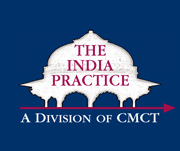 On September 24, 2014, ten months after its flawless launch on Nov 5, 2013, India’s Mars Orbiter Mission (MOM) successfully entered orbit around Mars, two days after NASA’s MAVEN orbiter reached the Red Planet. The news stunned the world. India became the first Asian nation to join the global space elite of the U.S., Europe and Russia, and accomplished its Mars mission on the first attempt. Most astonishing of all was the fact that India’s MOM had cost $74 million to NASA’s $671 million for the MAVEN project, and had taken 18 months from start to launch, while NASA's had been 5 years in the making.
On September 24, 2014, ten months after its flawless launch on Nov 5, 2013, India’s Mars Orbiter Mission (MOM) successfully entered orbit around Mars, two days after NASA’s MAVEN orbiter reached the Red Planet. The news stunned the world. India became the first Asian nation to join the global space elite of the U.S., Europe and Russia, and accomplished its Mars mission on the first attempt. Most astonishing of all was the fact that India’s MOM had cost $74 million to NASA’s $671 million for the MAVEN project, and had taken 18 months from start to launch, while NASA's had been 5 years in the making.
What made this possible? In addition to scientific and engineering excellence, what fundamental strength of the Indian way of getting things done and approach to innovation accounts for this technological feat on a shoestring? What can NASA learn from the Indian Space Research Organization (ISRO)? What can the mature developed economies of the world learn from this example of what has been accomplished in the resource-constrained environment of an emerging economy?
A few months earlier, I had been invited to brief the NISAR Mission Project Team at the Jet Propulsion Laboratory in Pasadena working on a joint mission between NASA and ISRO to design and launch by 2020 a satellite with advanced radar imaging that will provide an unprecedented capability to observe the natural processes of the changing earth. The purpose of the briefing was to create awareness of cultural differences in thinking, communication, ways of working and management style that could potentially affect the success of this high-stakes India-U.S. scientific and technological undertaking.
At JPL, I met Mr. Alok Chatterjee, Mission Interface Manager and main architect of this joint project with India. A veteran of both ISRO and NASA/JPL, he had also helped set up JPL support for ISRO's Mars Orbiter Mission. We had the opportunity to discuss at length the differences in how projects are planned and carried out India and the U.S., with special reference to ISRO and NASA/JPL, and how to make such project collaborations successful.
The parallel development and launching of the India and U.S. Mars orbiters provided us with a high-profile case in point for what we both believe is a fundamental aspect of the Indian mindset that needs to be understood, appreciated and negotiated on a daily basis by all who work with Indian partners and counterparts. This approach and way of thinking is superbly captured by the colloquial Hindi term 'jugaad' - India’s art of ingenious improvisation.
In its original meaning, jugaad refers to makeshift motor vehicles cobbled together from whatever parts are at hand. Unregistered, untaxed, unregulated, and officially banned by the Indian government, jugaad vehicles are a public safety hazard, but they are also a creative solution to the immediate problem of providing transportation in rural areas and among the nation’s poor.
By extension, however, jugaad has come to refer to a habit of mind, born of historical scarcity and an environment of uncertainty, which emphasizes ad hoc improvisation and flexibility as a way of getting things done. Jugaad means different things in different contexts, but it’s fundamentally the art of “making things work” in the immediate present circumstances. It enables people to come up with quick, innovative and low-cost ways of solving problems, and to make something work even when conventional wisdom says it isn’t possible. It’s a philosophy that is at the heart of Indian entrepreneurial energy and optimism.
There are myriad examples of jugaad in action in India at the level of everyday work style as well as fundamental attitude and belief. What each reveals is that, in the Indian environment, flexibility and “playing it by ear” is not only habitual, and often a matter of necessity, but is considered a strength rather than a weakness. Historically, under feudalism, colonialism and — later on — the “bureaucracy raj” of the first 40 years of independent India, the ability to work around the system, to improvise (and to circumvent the rules!) was often required for any kind of success.
Of course, jugaad is a two-edged sword. Social commentators and management theorists in India line up on opposite sides of an ongoing and heated national debate about the pros and cons of the jugaad approach. For some, it's "an Indian commodity ripe for export", while for others it's an attitude that can mean choosing expediency over long-term effectiveness, and creating temporary solutions that cut corners and compromise on quality.
It's not surprising, then, to see Indian commentary on the Mars Orbiter Mission phrased in terms of the ongoing national debate about jugaad. "No room for jugaad on Mars" is the title of a Times of India Op-Ed piece written right after the satellite entered into orbit. But for NASA/JPL's Alok Chatterjee, “Jugaad is the Indian approach of getting the maximum out of spending the least amount of resources, including time. And while jugaad cannot defy the laws of physics in getting a complex space mission like MOM accomplished, it is definitely a time-tested approach that has proved applicable to processes for achieving the mission's accelerated goals." Or, in the words of ISRO Chairman Dr. K. Radhakrishna, "It's a question of philosophy, and each country has its own."
India’s Mars Orbiter Mission "space venture on a shoestring" was thus made possible not only by less expensive engineering talent willing to work around the clock, but also by using ingenious improvisation to cope successfully with resource constraints and exceptionally tight timelines. ISRO built the final model from the start instead of building a series of iterative models, as NASA does. They limited the number of ground tests. They used components and building blocks from earlier and concurrent missions. They also circumvented the lack of a rocket powerful enough to launch the satellite directly out of the earth’s gravitational pull by having the satellite orbit the earth for a month to build up enough speed to break free from the earth’s gravitational pull.

Right now, in the afterglow of India’s space age triumph on a frugal budget, the strengths of the jugaad philosophy seem vindicated. But had the Mars Orbiter Mission story ended differently, in failure, as have 30 out of the 51 attempts the world has made to reach Mars, the talk in India today would be far different from Prime Minister Narendra Modi’s hailing of the mission as “a shining symbol of what we are capable of as a nation.” There would be questioning of whether the national genius for low-cost improvised innovation and ingenious workaround solutions is indeed the key to a successful future.
Karine Schomer, PhD is President of Change Management Consulting & Training, LLC, and leads The CMCT India Practice, specializing in cross-cultural training and management consulting for doing business with India, competitive advantage through cross-cultural awareness, business etiquette and protocols, cross-cultural communication and teamwork skills, outsourcing management best practices, and offshore team leadership strategies. For more learning resources, check The Working and Managing Across Cultures Blog.



